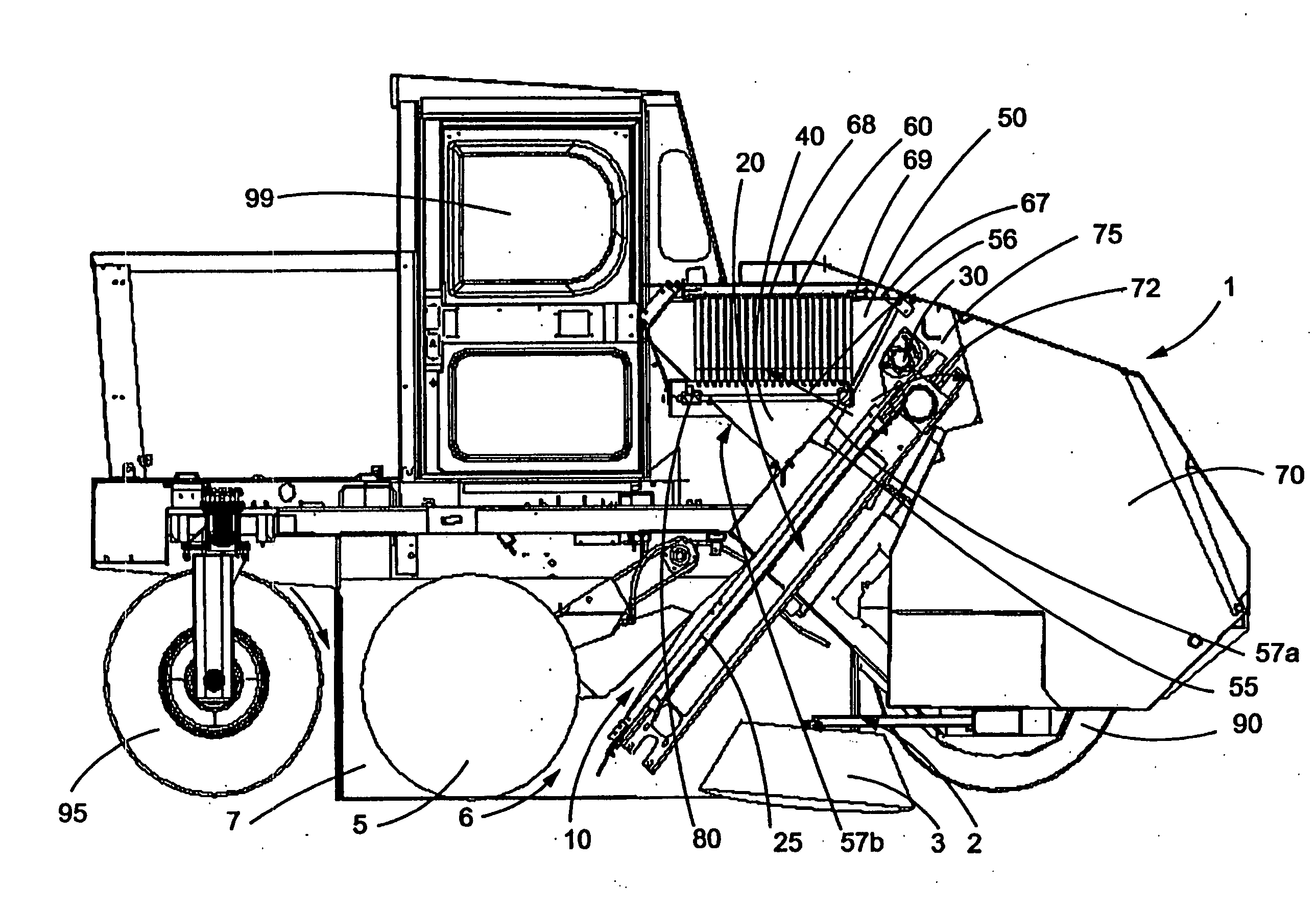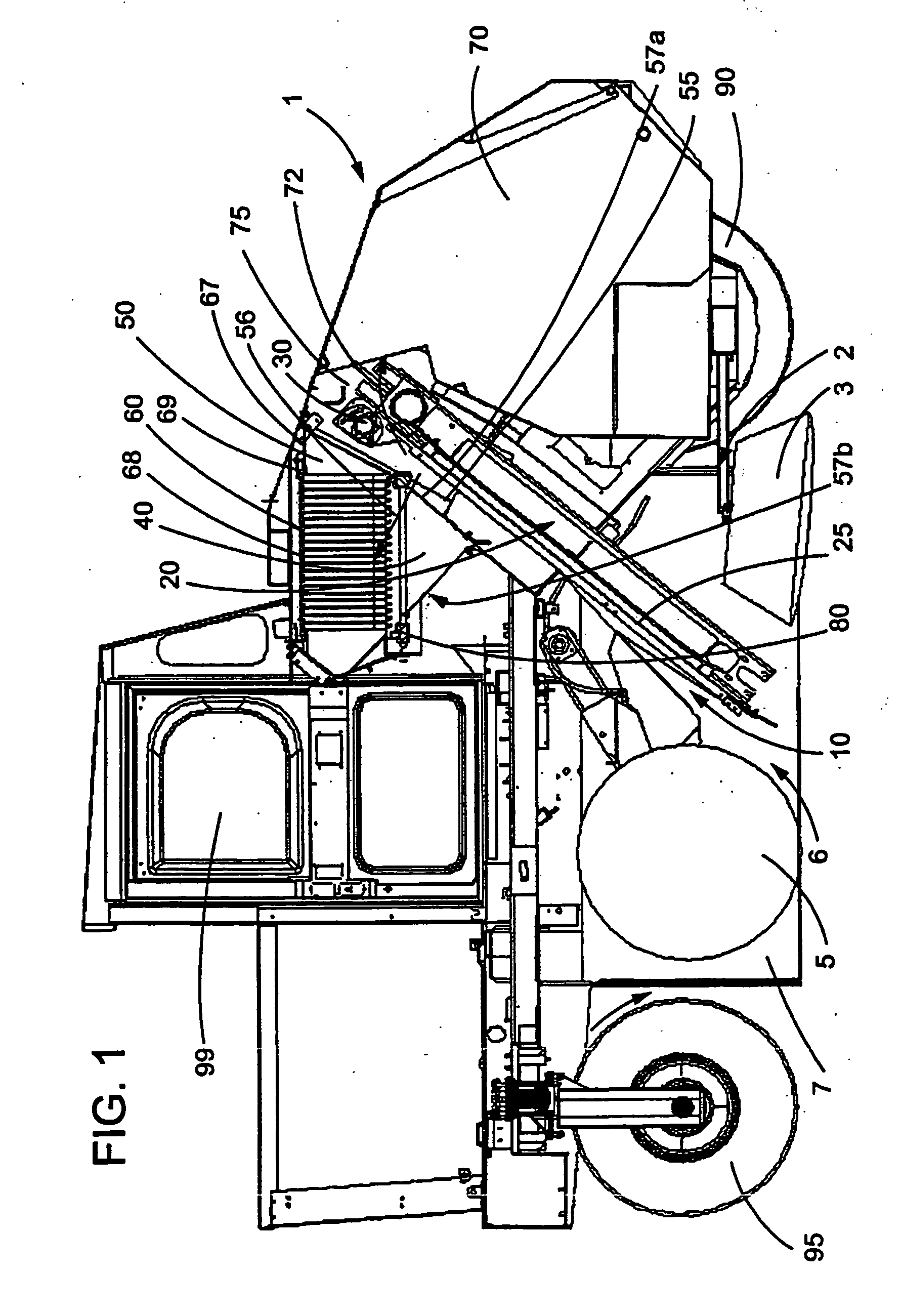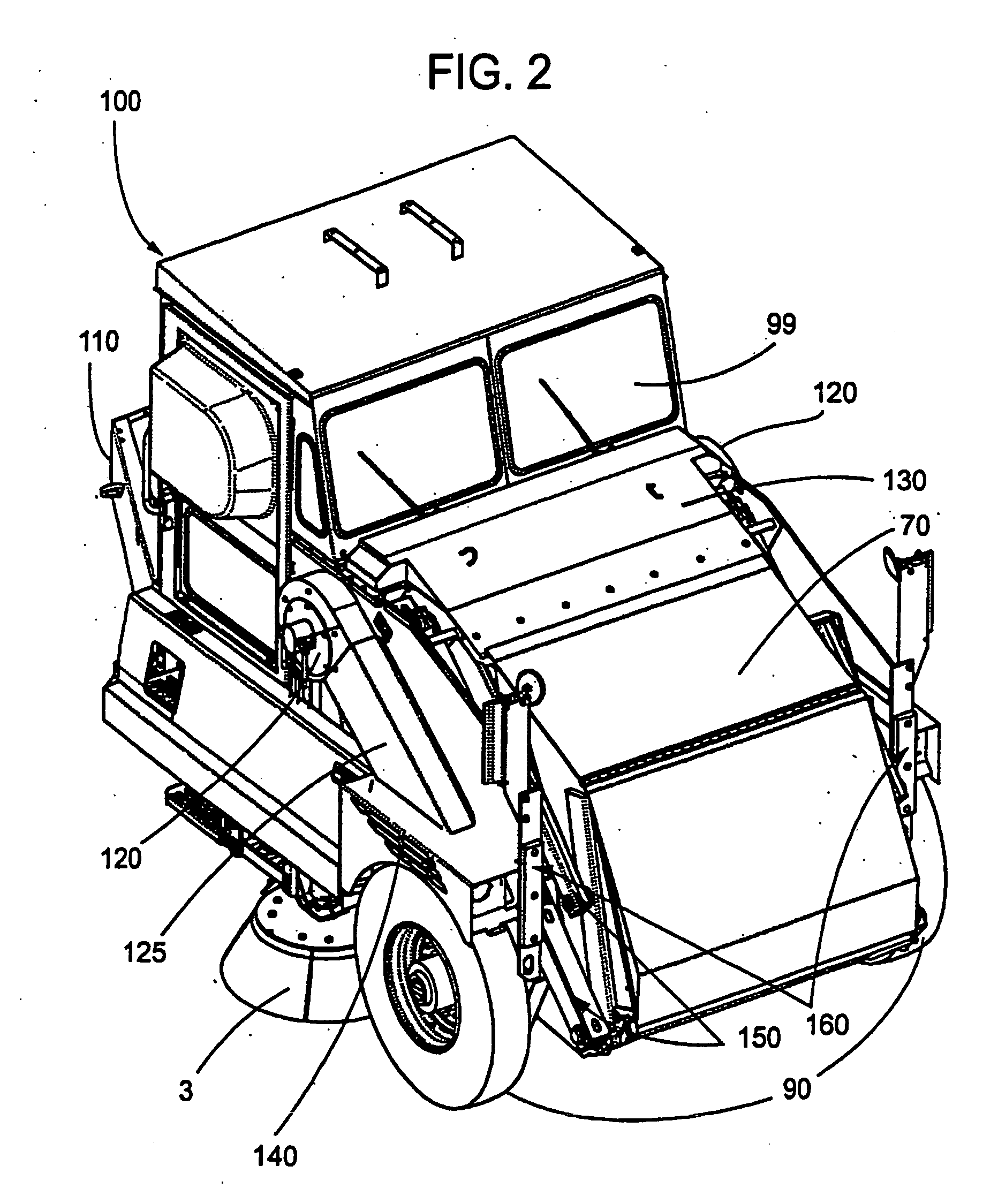Debris collection systems, vehicles, and methods
a technology for collecting systems and debris, applied in the direction of cleaning filter means, suction cleaners, constructions, etc., can solve the problems of limiting the usefulness of the collection system and the vehicle, the inability of the device to effectively move large debris throughout the device, and the inability of the device to effectively move large debris
- Summary
- Abstract
- Description
- Claims
- Application Information
AI Technical Summary
Benefits of technology
Problems solved by technology
Method used
Image
Examples
Embodiment Construction
[0023] The invention provides alternative and improved systems for debris collection and handling (“debris processing”), vehicles comprising such systems, and related methods of collecting and handling debris. While several aspects of the invention are separately described herein, it will be understood that any aspect of any system, vehicle, device, or method described herein can be combined with any other aspect of the invention, unless otherwise stated or clearly contradicted by context.
[0024] In one aspect, among others, the invention provides a system for handling debris in a debris collection apparatus that includes a filter housing, a filter housing inlet, and a filter housing exhaust; a vacuum; a mechanical transport system; and a storage compartment. In operation, the mechanical transport system of the exemplary system delivers debris to the storage compartment, and the vacuum generates a directed suction force that, outside of the filter housing, is substantially limited t...
PUM
 Login to View More
Login to View More Abstract
Description
Claims
Application Information
 Login to View More
Login to View More - R&D
- Intellectual Property
- Life Sciences
- Materials
- Tech Scout
- Unparalleled Data Quality
- Higher Quality Content
- 60% Fewer Hallucinations
Browse by: Latest US Patents, China's latest patents, Technical Efficacy Thesaurus, Application Domain, Technology Topic, Popular Technical Reports.
© 2025 PatSnap. All rights reserved.Legal|Privacy policy|Modern Slavery Act Transparency Statement|Sitemap|About US| Contact US: help@patsnap.com



